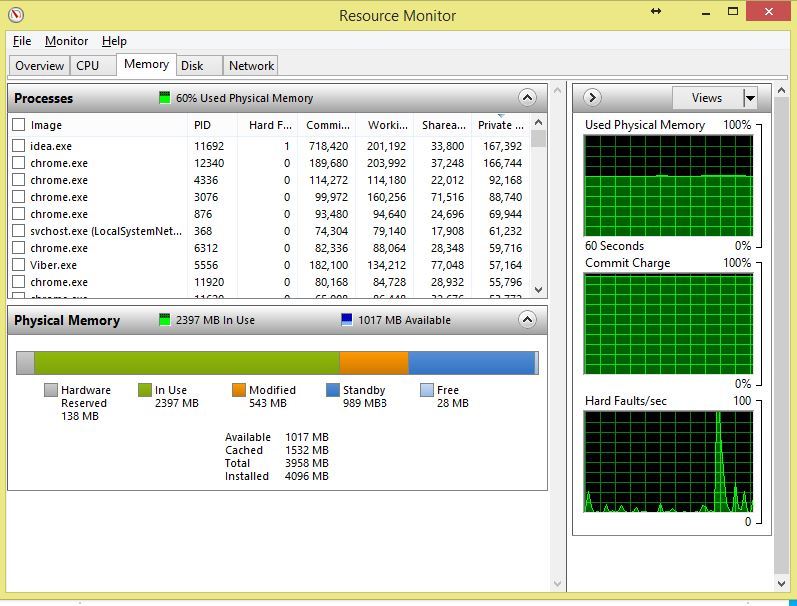Most of the time it is the sole cause of high disk usage in windows 10 PC. Please follow the steps given below to disable diagnostic tracking in windows 10. Step 1 – Open command prompt as admin. Step 2 – Run the following commands in command prompt. Did you find Windows 10 High CPU usage after installing the latest 2018-09 cumulative update? The system became unresponsive, suddenly antimalware service executable takes all disk, memory and CPU too high up to 100% every minute.
Windows 10 Iso
You know why you are here, right? You have a lagging Windows 10 PC which is refusing to work as intended. The Task Manager shows a 100 percent disk usage. It seems that your hard drive is working overtime, but you are not sure why.
Here are some easy steps to resolve the 100% disk usage error that will help you speed up your PC and make it usable again.
1. Turn off Windows Search
Windows Search was built to help search files on hard drive quickly. Windows constantly indexes all the files which can take a toll on your PC’s performance. You can disable it, but that only means that searching for files would take longer.
Launch the RUN command (Windows+R) to open Command Prompt by typing CMD.
You will see a black window open. Type the following command and hit Enter.
Check if you can still see the 100% Disk Usage error. If not, then you need to disable the Windows Search permanently. To do that, relaunch the RUN command and open services.msc file.

Find Windows Search here, right-click on it and select Properties.
Click on Startup Type and change its status from Automatic to Disabled. Click on Apply.
You can replace Stop with Start in the above command to reverse the effect.
2. Turn off Superfetch
Superfetch is what helps your Windows PC boot faster, or so Microsoft claims because my PC never boots fast enough. If you use sleep or hibernate mode and don’t need to boot up all that often, try disabling Superfetch.
Relaunch the Command Prompt by typing CMD command in RUN (Windows+R). Type this command once it opens.

Check if the Task Manager still shows 100% Disk Usage error.
3. Use CheckDisk Command
Relaunch the Command Prompt by typing CMD in the RUN command and hitting Enter. Once it opens, type the following command.
You will be asked to confirm your actions. To do so, simply type ‘y’ without quotes and hit Enter.
The system will perform a disk check only when you reboot your computer. So save all your work and do the reboot.
Also on Guiding Tech
6 Cool Ways to Get Louder and Better Sound on Windows 10 PC
Read More4. Reset Virtual Memory
Virtual memory doesn’t just consist of RAM, but it is also a part of your system’s hard drive. When Windows finds low RAM to perform actions, it borrows a part of your hard drive's memory to get the job done. Maybe there is a virtual memory leak? If so, resetting it should fix it.
Press the Windows button and search for Advanced System Settings. Under the Advanced tab, find Performance and click on Settings there.
Again, go to the Advanced tab and click on Change under the Virtual memory heading.
Uncheck the option Automatically manage paging file size for all drives if not already unchecked. In the same window, select primary drive where your OS is installed (mostly C drive) and select Custom size. The initial size should be set to the recommended value that you can see just below. Maximum size should be set to 1.5 times the size of your RAM. If your PC has 4GB RAM (1GB = 1024MB), don’t set it to more than 6144MB.
Click on Set and then OK everywhere to save and check if you can still see the 100% disk usage error in the Task Manager.
5. Turn off Windows Defender or Antivirus
All versions of Windows come with a built-in antivirus program called the Windows Defender. Most people like to install a third-party antivirus product like Kaspersky or Norton or AVG. While necessary, these antivirus programs can hog resources more than necessary. Disable them temporarily to see if the issue persists.
Most antivirus will let you disable them with a simple right-click option right in the system-tray including Windows Defender.
6. Clear Cache and Temp Files
Many people are using third-party software like CCleaner to clean their system of cache, temp files, and other temporary data, but given the recent events, we would recommend against it. Instead, you can clear cache and temp files manually. Type temp in Run Command to open the correct directory.
Press CTRL+A to select all files here and delete them. Nothing to worry about here. Windows will generate them again if it needs them.
Recheck your system's performance.
Also on Guiding Tech
5 Free Portable Antivirus Software for Windows to Fix PCs On the Go
Read More7. Skype
Yes, users have been complaining about Skype being a resource-hog for years now, and things haven’t improved with Windows 10. Make sure to quit Skype before proceeding. You can stop Skype from the system tray or Task Manager itself. You can also use it to open the file location or go there manually by opening the folder where you installed it.
Right-click on the Skype.exe file and select Properties or use the ALT+Enter shortcut.
Under the Security tab, click on Edit to change permissions.
Select ALL APPLICATION PACKAGES and enable the Write option under the Allow column. Click on Apply and OK to save. Time to recheck the disk usage.
8. Google Chrome Prefetch Setting
Google Chrome is another program that is known to be a resource hog. Often you will see it at the top of your Task Manager list when you sort it by Memory. Open a new tab in Chrome and click on three-dots menu and click on Settings.
Click on Advanced option after scrolling to the bottom of the page.
Under Privacy and security, toggle off Use a prediction service to load pages more quickly.
9. Disable Windows Tips
Windows 10 comes with a lot of options and settings. That can be overwhelming for new users. To make things easier, Windows offers tips and tricks. If you don’t need them, you can disable it. Press Windows+I to launch settings or search it using the Windows button. Click on Settings.
Under Notifications and actions, disable Get tips, tricks, and suggestions as you use Windows option.
To Err is Computer
The 100% disk usage error can take a toll on the performance of your PC, but it can be easily remedied. We need to find a way to undo what's been done — no need to lose our cool here. I hope one or more of the above methods resolved your 100% disk usage error. If you found a new way, please do share in the comments below.
Next up: You see an error while using Windows but don't know how to copy it. Click on the link below to learn how to copy text from Windows error message boxes.
Read NextHow to Copy Text From Windows Error Message Boxes, Windows Explorer Etc Using GetWindowTextAlso See#troubleshooting #windows 10Did You Know
You can switch manually to the tablet mode in Windows 10.
More in Windows
Top 13 Ways to Fix Windows 10 Network Adapter Missing Issue
I did some more testing this morning. I discovered that when booting under safe mode (msconfig -> toggle the safe mode option under boot tab -> reboot. Do the reverse to get it to boot normal again) the problem doesn't exist. CPU reports normally in safe mode. I also tried safe mode with networking to fire up all the services related to getting network communication - CPU still appeared normal in safe mode with networking.
99% Cpu Usage Windows 10
So I suppose that tells us it's a service of some sort. I then tried to boot normally and shut down every dang service one at a time, everything it would let me shut down. Still never found the one that made the CPU max issue go away under normal boot. Maybe I should get a list of services running under safe mode and services running under normal and try again to try to narrow it down... tedious.
I also tried disabling all the startup programs under the task manager startup tab. Didn't fix/change the max CPU issue.
Anyhow I'm now installing the Windows Assessment Toolkit now as recommended above... I guess I'll see where that leads me.
Summary so far:
Safe Mode: Normal CPU reporting
Safe Mode with Networking: Normal CPU reporting
Windows 10 Download
Normal boot with all Startup items disabled: Max CPU
Fix Cpu 100% Windows 10
Normal boot with every service shut down allowed by Windows: Max CPU